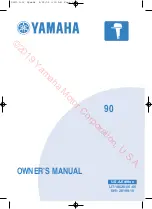
6.2. Processor Subsystem Reset
The external system reset button, labeled BTNR, resets the Zynq device without
disturbing the debug environment. For example, the previous break points set by the
user remain valid after system reset. Due to security concerns, system reset erases all
memory content within the PS, including the On-Chip-Memory (OCM). The PL is also
cleared during a system reset. System reset does not cause the boot mode strapping
pins to be re-sampled. After changing the boot mode jumper a power cycle is needed to
act on the new setting. BTNR is located on the underside of the Eclypse Z7, below the
SD card slot.
7. USB-UART Bridge (Serial Port)
The Eclypse Z7 includes an FTDI FT2232HQ USB-UART bridge (attached to connector
J6) that lets PC applications communicate with the board using standard COM port
commands (or the tty interface in Linux). Drivers are automatically installed in Windows
and newer versions of Linux when the Eclypse Z7 is attached. Serial port data is
exchanged with the Zynq using a two-wire serial port (TXD/RXD). After the drivers are
installed, I/O commands can be used from the PC directed to the COM port to produce
serial data traffic on the Zynq pins. The port is tied to PS (MIO) pins and can be used in
combination with the UART 0 controller.
The Zynq presets file (available in the
) takes care of
mapping the correct MIO pins to the UART 0 controller and uses the following default
protocol parameters: 115200 baud rate, 1 stop bit, no parity, 8-bit character length.
Two status LEDs provide visual feedback on traffic flowing through the port: the
transmit LED (the lower of the two yellow LEDs in the circuit board indicator, LD4) and
the receive LED (the upper of the two yellow LEDs in the circuit board indicator, LD4).
Signal names that imply direction are from the point-of-view of the DTE (Data Terminal
Equipment), in this case the PC.
The FT2232HQ is also used as the controller for the Digilent USB-JTAG circuitry, but
the USB-UART and USB-JTAG functions behave entirely independent of one another.
Programmers interested in using the UART functionality of the FT2232 within their
design do not need to worry about the JTAG circuitry interfering with the UART data
transfers, and vice-versa. The combination of these two features into a single device
allows the Zybo Z7 to be programmed and communicated with via UART from a
computer attached with a single Micro USB cable.
The connections between the FT2232HQ and the Zynq-7000 are shown in Figure 7.1.










































